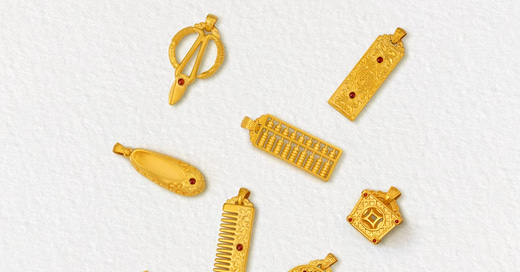The quality advantage
Like with fine dining and wellness, having taste in fine materials is a flex
Welcome to the Sociology of Business. In my last analysis, Cultural influence is not about hiring influencers I explored why it’s important not to confuse the two. If you are on the Substack, join the chat. With one of the paid subscription options, join Paid Membership Chat, and with the free subscription, join The General Chat on The Sociology of Business WhatsApp group.
“Made in China”
For those in the West and of a pre-Gen-Z generation, the label often signifies something cheap, of poor quality, or counterfeited, like “Reebok” with one “e.”
Soon, it may signify something completely different.
Together with the general pivot to quality in the global luxury (all of the sudden, there are so many craftsmanship ads and so many types of cashmere to recon with), Chinese brands are winning through quality in their local market.
Informed Chinese consumers do not anymore equate Western brands with superior ingredients, materials, or know-how. They recognize the difference between something that is well-made and something that is merely well-advertised. Moutai, a Chinese luxury liquor brand, and BYD, a domestic EV brand, are dominant in their respective markets. Mao Geping dethroned its Western counterparts in the high-end beauty market once Chinese consumers realized they were paying premium for the same ingredients. Where once there were no real local alternatives, so Western brands filled a gap, now Chinese brands offer quality in materials and craftsmanship in design that is equal or better than their Western competitors.
Case in point is the recent financial and media frenzy around Laopu Gold, a Chinese luxury jewelry retailer, which saw its stock soar 2,300% to become Hong Kong’s priciest stock since its listing in June 2024. JPMorgan projects Laopu’s annual revenue to reach $20BN in 2025, or 135% increase over 2024. The brand’s gross margin is over 41%, and its net income is projected to reach $3.8 billion, up from $1.5 billion in 2024.
Laopu Gold fares well with younger consumers. The brand plans to grow into a a global jewelry brand, through a brand model that mixes highly exclusive traditional and modern designs and a fixed-price, high-margin business model. Laopu sells 24-karat gold of high purity, which gives it strong pricing power. (The brand rivals tie their prices to the cost of gold, giving them less control over profit margins). The outcome is that, compared to foreign offerings like Cartier or Tiffany, Laopu prices are lower, but quality and design are higher.
Laopu’s finely tuned quality/price ratio points at the larger market opportunity for global luxury brands. Having higher quality materials, exceptional services, and best-in-class design than your counterparts is a competitive advantage. After all, despite surging prices of gold, Western luxury jewelry brands did not enjoy the same massive growth neither in China nor in the Western markets.
The most important piece of brand communication today is not a fashion campaign, an invite-only dinner or an event, store windows, or a beautiful Instagram grid. It’s the quality of fabrics, materials, cut, or hardware.
The main way for luxury brands to differentiate, across categories, is through their fabrics, materials, and design. The fabric is the brand.
Product materials are the new nexus of a brand’s innovativeness and differentiation.
With price hikes, both HNWI and aspirational consumers expect even higher quality and innovation in materials from their luxury purchases. They want their cashmere to be ever softer and ever more washable, their wool to be thinner, their cotton to last longer, their diamonds to be shinier ...
Like with fine dining or wellness, it’s a status symbol to recognize and appreciate different fine fabrics. Having taste in fine materials is a flex.
All of this leads luxury brands to re-focus on their craftsmanship and use it as their main marketing tool (a lot of brands reintroduced product craftsmanship and artistry in their advertising and content in recent seasons).
Information about what something is made of subverts the contemporary fashion system, as it gives products durability beyond trends. If a consumer buys something of
Keep reading with a 7-day free trial
Subscribe to The Sociology of Business to keep reading this post and get 7 days of free access to the full post archives.





